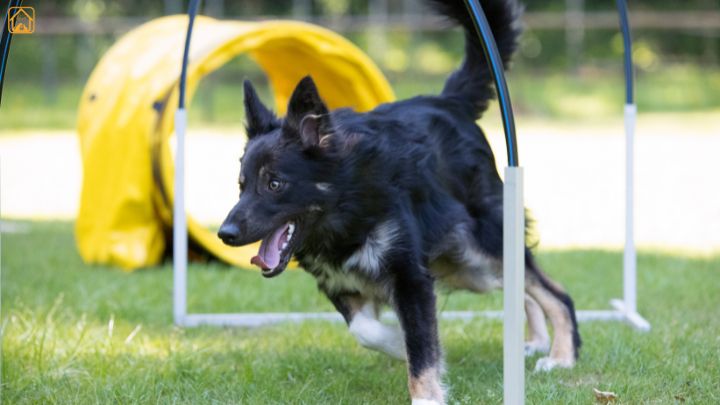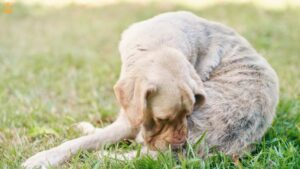Understanding Exercise Limitations in Dogs with Health Issues
Every dog is unique, but certain health conditions do change what’s safe and helpful when it comes to movement. If your dog has arthritis, heart disease, joint problems, or is recovering from an injury, you’ll need to rethink how and how much they exercise. Pushing them too hard can lead to more pain or setbacks, but too little movement can cause muscle loss and stiffness.
The key is recognizing your dog’s limits and adjusting activities to match their needs. You might notice:
- Slower pace or reluctance to move
- Limping or stiffness after activity
- Heavy panting or fatigue sooner than before
- Discomfort when jumping or climbing stairs
Understanding these signs helps you choose the right exercises for dogs with health issues and avoid making things worse. Think of exercise as a tool to support healing, not just burn energy.
Core Principles of Therapeutic and Rehab Dog Exercises
Why Therapeutic Exercise Matters
Therapeutic and physical therapy exercises for dogs are more than just movement, they’re about improving quality of life, reducing pain, and building strength safely. The best exercises for dogs with health issues are tailored to their condition and comfort level.
Guiding Principles
- Low Impact: Choose activities that minimize stress on joints, think slow leash walks, swimming, or gentle stretching.
- Consistency Over Intensity: Short, regular sessions are better than occasional long workouts.
- Slow Progression: Start simple and increase difficulty only if your dog handles it well.
- Adaptation: Modify exercises as your dog ages or as their health changes.
- Observation: Watch for signs of pain, limping, or fatigue and adjust accordingly.
Sticking to these core principles can help your dog regain confidence and mobility, even if progress feels slow at first.
Low-Impact Workouts for Common Health Conditions
Gentle, Everyday Routines
Low-impact exercises for dogs with health issues are the gold standard, especially for arthritis, joint pain, or overweight pups. They keep your dog moving without risking further injury or pain.
- Slow Leash Walks: Short, controlled walks on flat surfaces help maintain mobility and weight without overloading joints.
- Hydrotherapy: Swimming or underwater treadmill sessions reduce joint stress and support muscle building.
- Gentle Play: Games like scent searching or soft toy fetch in small spaces can provide mental stimulation and light activity.
- Passive Range of Motion: Carefully moving your dog’s limbs through their natural range helps prevent stiffness (always ask a vet or rehab therapist to demonstrate first).
- Basic Strength Moves: Sit-to-stand exercises gently build leg and hip strength.
Tip: If your dog has trouble outside, try indoor rehab activities for dogs, like short hallway walks or stepping over low objects. It’s surprising how much a few minutes each day can help.
Condition-Specific Routines: IVDD, Hip Dysplasia, Luxating Patella, and Arthritis
IVDD Dog Exercises at Home
Dogs with intervertebral disc disease (IVDD) need careful, controlled movements. Focus on:
- Strict rest followed by gentle, vet-guided leash walks
- Core stability routines (like gentle weight shifting)
- Supervised balance exercises on soft mats
Hip Dysplasia Dog Exercises
- Hydrotherapy or swimming for non-weight bearing movement
- Hill or ramp walking to build hip muscles
- Controlled sit-to-stand routines
- Passive stretching under professional guidance
Luxating Patella Dog Exercises
- Slow, steady leash walks on level ground
- Strengthening exercises for thigh and hip muscles
- Balance exercises, like standing on a foam pad
Low-Impact Exercises for Arthritic Dogs
- Short, frequent walks (avoid stairs)
- Gentle stretching and massage
- Swimming, if available
Each of these routines should be tailored to your dog’s comfort level. If you’re unsure, ask your vet or a canine rehab specialist for a vet-approved dog exercise routine. I once saw a dog with severe arthritis light up during a short swim, water really does wonders for sore joints.
Vagus Nerve Reset and Calming Exercises for Dogs
Stress, chronic pain, and anxiety can affect your dog’s recovery and well-being. That’s where vagus nerve reset dog exercises come in. Calming routines help regulate their nervous system and support healing.
- Deep Breathing Together: Sit quietly with your dog, pet them gently, and breathe slowly, your calm energy helps them relax.
- Ear Massages: Gently rub the base of your dog’s ears, which can stimulate the vagus nerve and promote relaxation.
- Dog Vagus Nerve Reset Exercises: Slow, rhythmic stroking from head to tail, gentle stretching, or “cookie stretches” to encourage focus and calm.
Ever tried a calming routine after a tough vet visit? Dogs seem to melt into your hands when you get it right. These exercises don’t just help their mood, they can make physical therapy more effective, too.
Post-Injury and Post-Surgery Recovery Exercises
After surgery or an injury, your dog’s body needs time and gentle movement to heal. Dog exercises after surgery should always follow your vet’s recommendations, no shortcuts!
- Leash-Controlled Walks: Very short, slow walks to maintain circulation
- Passive Range of Motion: Gentle, vet-demonstrated limb movements
- Balance and Weight Shifting: Standing on a stable surface and shifting weight side-to-side
- Massage: Light massage to reduce swelling and improve comfort
Always watch for pain, swelling, or reluctance, and talk to your vet if you spot trouble.
Safe Indoor Activities and Hydrotherapy for Limited Mobility
Not every dog can run at the park, but that doesn’t mean they can’t enjoy movement. Indoor rehab activities for dogs keep things manageable, especially in bad weather or for dogs with severe mobility issues.
- Indoor Scent Games: Hide treats or toys in easy-to-reach spots for gentle activity
- Step-Over Drills: Use rolled towels or low obstacles for controlled stepping
- Mat Work: Practice sit-to-stand or gentle stretching on non-slip mats
- Hydrotherapy: If you have access, swimming or underwater treadmill sessions are fantastic for dogs with hip dysplasia or arthritis (always supervised!)
For some dogs, just moving around the living room is enough of a workout. The goal is to keep them engaged, safe, and comfortable. Who knew your hallway could turn into a doggie rehab gym?
Balance, Strength, and Mobility Training for Senior and Disabled Dogs
Senior and disabled dogs still crave activity, it just looks a little different. Balance and strength training for dogs helps maintain independence and prevent further injury.
- Balance Disc Exercises: Have your dog stand on a soft pad or disc to activate stabilizer muscles
- Weight Shifting: Gently encourage shifting weight from side to side while standing
- Assisted Sit-to-Stand: Guide your dog through slow, controlled sits and stands
- Stretches for Dogs with Back Pain: Gentle, vet-approved spinal stretches support flexibility and comfort
- Mobility Aids: Harnesses or slings can help dogs with severe weakness safely participate.
How much exercise for a disabled dog? It really depends, but even a few minutes of targeted movement a couple times a day can make a difference. I once met a 14-year-old spaniel who loved standing on a wobble cushion, her little victories were just as meaningful as any marathon run.
Consulting Your Veterinarian: Safety First
Before starting any new exercise routine, check in with your vet. They know your dog’s medical history and can recommend safe, customized activities. Some conditions, like heart disease or after surgery, make certain exercises risky, and only a veterinarian can give the green light.
Bring up questions like:
- Which exercises are safe for my dog’s condition?
- How often and how long can we exercise?
- Are there warning signs I should watch for?
- Should we consider physical therapy or hydrotherapy?
Your vet might also suggest a referral to a certified canine physical therapist for advanced rehab or mobility exercises for injured dogs. Don’t be shy, it’s always better to double-check than to risk a setback. Honestly, I’ve learned that the best routines are the ones that start with professional advice, not guesswork.
Conclusion
For more detailed advice on dog hip dysplasia exercises or safe workouts for senior dogs, check out trusted resources like the American College of Veterinary Surgeons.



